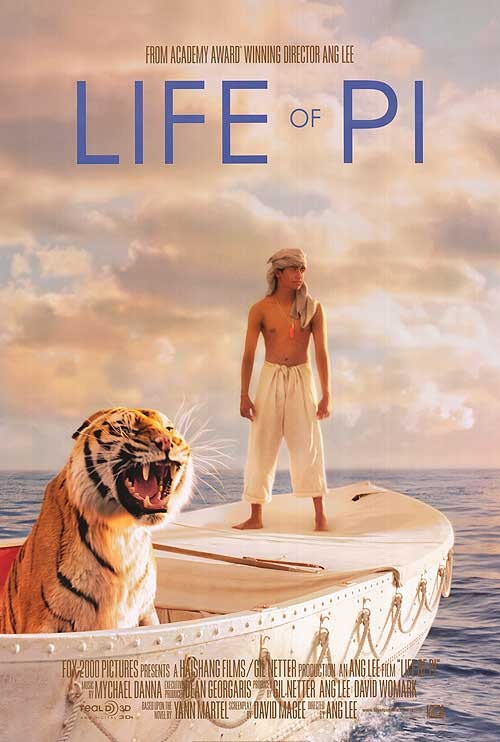Ang Lee turns 'Life of Pi' into spectacle
- By Zhang Rui
 0 Comment(s)
0 Comment(s) Print
Print E-mail China.org.cn, November 23, 2012
E-mail China.org.cn, November 23, 2012

"Life of Pi," the 3D film based on the 2001 brain-twisting novel of the same title by Yann Martel, tells the story of Pi, a 16-year-old Indian boy and the sole survivor of a sinking freighter, who finds himself on a lifeboat for an epic adventure with a Bengal tiger named Richard Parker.
Armed with "Avatar" director James Cameron's 3D camera, the Taiwan-born American director Ang Lee, who can boast "Crouching Tiger, Hidden Dragon" and "Brokeback Mountain" on his resume, entered a new era for his own career, and presented a film that was once deemed "unfilmable" as it involves water, animals, children, hope, belief and philosophy -- all elements said to be the hardest parts to do in filmmaking history.
Ang Lee opens the film slowly, telling the background story of Pi Patel before the perfect storm enters his life. There are some dull and some amusing moments, but you will realize their importance by the end of the movie.
During the first part of the film, Pi tries to find and "just wants to love" God by following the teachings of Hinduism, Christianity and Islam until his family decides to sell the zoo they operate and move to Canada for political reasons. When their journey takes off and the storm hits, the film goes into full gear and reaches a climax like a condensed version of "Titanic."
After the storm, Pi regains consciousness and finds himself in a small lifeboat accompanied by a Bengal tiger, a hyena, a zebra and an orangutan. During the aftermath, when hunger strikes all victims, killings happen and Pi and tiger become the last two standing.
The tiger cannot be tamed. Pi tries to find a way to co-exist with the beast on the vast ocean. They fight with each other, they encounter flying fishes and another storm, and then land on a magical carnivorous island where they meet countless meerkats. In the end they decide to leave and eventually reach the shores of Mexico. The tiger soon disappears in jungle and Pi never sees him again.
The time they spent drifting around on the ocean certainly makes for the most interesting and inspiring part of this cast-away story. Some of the most beautiful, dreamy scenes ever created on screen, such as the illuminant jellyfishes and whale, the starry sky and its reflection on the endless peaceful ocean, paired with 3D and IMAX technology ensure the movie's beauty and excitement.
But "Life of Pi" is more than merely a visual spectacle.
Suraj Sharma, who plays Pi in the film after Lee picked him from 3,000 auditioners, is a newbie without much acting experience. But he gives a very strong performance in the film that can easily stand alongside the most famous acting veterans.
The core of story is about belief. The boy Pi himself believes in three religions. When the journey ends, two Japanese officials from the Maritime Department try to investigate the truth behind the ship wreck, but don't believe the story of Pi and the animals. Pi then gives them another, crueler, version that seems more realistic. No animals but only he, his mother, a cook and a sailor were involved. Actually, the tiger may ver well have been himself.
This is where the story loses its magical side and the crudeness of reality hits. "Which version do you prefer?" Pi asks the writer. "The animal one," the writer replies. You cannot possibly imagine the cruelty Pi had to endure during his 227-day-long drift along the ocean, but the magical realism can be felt everywhere. This is the point where audiences have to rethink the whole story and find the deeper spiritual meaning that hides within.






Go to Forum >>0 Comment(s)